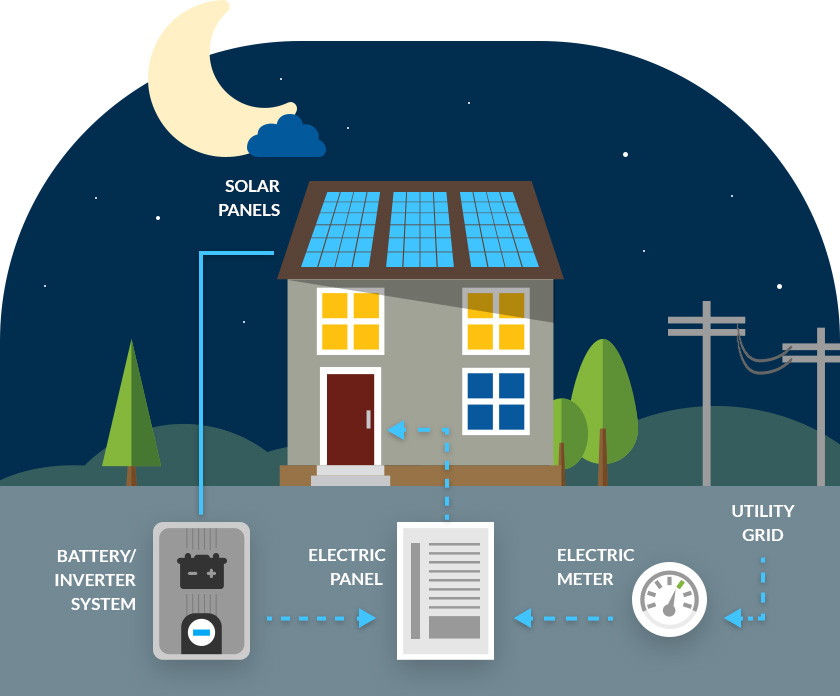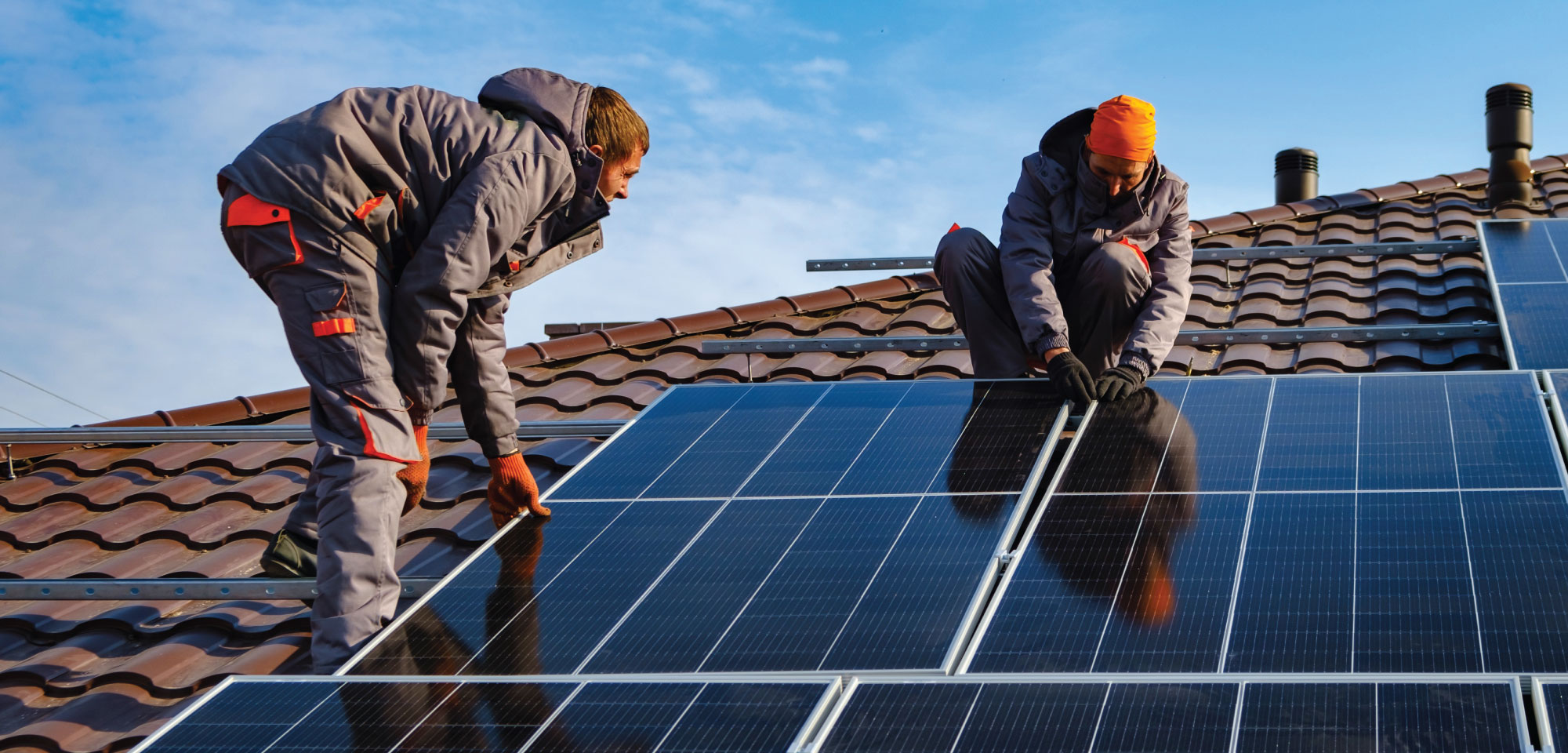Get This Report on Solar Panel Company
Get This Report on Solar Panel Company
Blog Article
Virginia Solar Incentives: Lumina Solar Specializes In Providing Advanced Photovoltaic Solutions For Houses And Services
History and Establishing
Have you ever wondered how a photovoltaic panel business springs from a mere stimulate of motivation into a powerhouse of renewable resource? It frequently get more info starts with a vision-- one fueled by a blend of development, decision, and a pinch of serendipity. The journey of lots of solar companies mirrors the advancement of the innovation itself: from bulky, ineffective panels to smooth, high-efficiency marvels utilizing the sun's bounty.
The Early Days
In the late 20th century, when solar power was still a specific niche concept, leaders planted seeds for what would become a worldwide movement. Picture a little workshop filled with curious engineers, relentlessly exploring with solar batteries. Their enthusiasm was palpable, typically driven by a desire to fight environment modification and reduce reliance on nonrenewable fuel sources.
One such anecdote has to do with a creator who, influenced by a camping journey, understood that even in remote locations, the sun might power necessary devices. This simple observation sparked a business's objective to democratize access to clean energy.
Founding Principles

- Development: Continually pushing the boundaries of solar technology to enhance effectiveness and resilience.
- Sustainability: Devoting to eco-friendly manufacturing and minimizing carbon footprints.
- Ease of access: Making renewable resource options economical and practical for daily users.
Turning points in Development
| Year | Secret Event |
|---|---|
| 1985 | Business founded in a little garage, concentrating on research study and advancement. |
| 1995 | Industrial solar panel product launched, acquiring regional attention. |
| 2005 | Broadened to international markets, welcoming worldwide renewable energy goals. |
| 2015 | Introduced cutting-edge photovoltaic panel innovation with enhanced energy conversion. |
Isn't it remarkable how these incremental steps, typically ignored, form the energy landscape today? The solar panel business story is not practically technology; it has to do with a relentless quest for a brighter, cleaner future.

Developments in Photovoltaic Panel Technologies
Ever discovered how some photovoltaic panels shine brighter and last longer? It's not magic; it's the science of photovoltaic effectiveness. Modern solar panel business invest heavily in technologies like bifacial cells, which capture sunlight from both sides, enhancing energy harvest without broadening roofing space. Have you ever questioned why some panels perform better on cloudy days? That's due to advances in thin-film solar innovation, which prospers under diffused light conditions.
Item Variations Tailored to Distinct Requirements
One size never ever fits all. Photovoltaic panel providers now provide:
- Monocrystalline panels for maximum effectiveness and streamlined aesthetics, perfect for space-constrained roofs.
- Polycrystalline panels, which offer an economical alternative without sacrificing excessive output.
- Building-integrated photovoltaics (BIPV), merging solar tech perfectly into architectural elements like windows and facades.
Selecting the right item isn't practically in advance cost; it has to do with matching your environment, energy goals, and long-term savings. For instance, homes shaded by trees require panels that master low-light situations, something numerous overlook until energy expenses climb up all of a sudden.
Technical Tips for Optimum Selection
- Evaluate the temperature level coefficient-- lower worths suggest panels lose less efficiency on hot days.
- Try to find panels with improved anti-reflective coatings to take full advantage of light absorption.
- Think about the panel's warranty not just for flaws, but for ensured power output over decades.
- Do not undervalue the significance of the inverter technology paired with the panels; it can make or break your system's efficiency.
Beyond Panels: Emerging Patterns
Picture solar panels that change their angle immediately to chase after the sun-- tracking systems are ending up being more accessible, increasing yield considerably. Or solar tiles that mix invisibly into your roofline, transforming your home into a quiet, self-sufficient power generator. These innovations are reshaping what a solar panel company offers-- not simply products, however incorporated energy options.
Market Existence and Global Operations
Ever wonder why some solar panel companies appear to grow up in every corner of the world while others hardly make a ripple? The distinction lies not simply in innovation however in mastering the art of navigating diverse markets. Expanding globally resembles planting seeds in different environments-- you should comprehend each environment's unique conditions to thrive.
Take, for circumstances, the detailed dance of logistics and supply chain management. Delivering panels midway throughout the world isn't almost range; it has to do with timing, custom-mades, tariffs, and adjusting to regional demand changes. A business with robust worldwide operations expects these variables, guaranteeing panels show up on schedule without pumping up costs. This insight is no small feat and typically separates market leaders from followers.
Secret Methods for Expanding Market Existence
- Localized production: Establishing production hubs near target audience reduces shipping hold-ups and import complexities.
- Strategic collaborations: Working together with regional companies accelerates market penetration and develops trust.
- Adaptive item design: Tailoring photovoltaic panel tech to weather, sun strength, and infrastructure subtleties boosts efficiency and approval.
What about the human element? Solar panel business operating internationally must reconcile cultural differences and regulative nuances without losing sight of their core objective. For example, what operate in a sun-drenched desert might falter in a humid seaside area. Often, the most innovative service is just listening-- taking in local insights to fine-tune innovation and method.
Professionals typically advise a phased rollout rather than a shotgun expansion. Why risk overextension when determined growth constructs sustainable momentum? Scaling wisely implies balancing aspiration with operational resilience - Solar Panel Company. In the race for sustainable energy dominance, persistence can be as important as speed.
Ecological Impact and Sustainability Practices
When solar panels first emerged, many presumed they brought absolutely no environmental luggage. However, the truth is more nuanced. The production of photovoltaic cells includes unusual earth metals and energy-intensive processes, which can leave a large carbon footprint before the panels even reach rooftops. Yet, the true ecological expense depends greatly on the sustainability practices employed by the photovoltaic panel company throughout the lifecycle of their items.
How frequently do we stop briefly to consider what takes place to photovoltaic panels at the end of their beneficial life? Unlike batteries or electronics, photovoltaic panels can last 25-30 years, but disposal and recycling pathways stay underdeveloped in many areas. A business dedicated to minimizing environmental harm will have a robust prepare for recycling photovoltaic products, salvaging valuable silicon, glass, and metals to prevent land fill build-up.
Key Sustainability Techniques
- Making use of low-impact production techniques that decrease water and energy consumption.
- Implementing closed-loop systems to recycle production waste back into brand-new panels.
- Engaging in transparent supply chain audits to guarantee ethical sourcing of raw products.
- Designing panels for easier disassembly to assist future recycling efforts.
It deserves keeping in mind that some solar companies have actually pioneered innovative approaches, such as integrating naturally degradable components or using less hazardous chemicals during fabrication. This not just decreases ecological strain however likewise sets a precedent for the market. The question remains: can the solar industry really pivot towards a circular economy model without compromising performance or price?
Specialist Tips for Examining Sustainability
- Ask about the business's commitment to carbon-neutral production and whether they offset emissions.
- Investigate if they partner with licensed recycling facilities dedicated to solar panel waste.
- Look for openness reports detailing ecological effects and sustainability objectives.
- Consider the longevity and warranty of panels as an indirect procedure of resource effectiveness.
In the end, choosing solar power ought to imply more than just slashing electrical power costs; it has to do with nurturing a future where energy is harvested responsibly and waste is attentively handled. Solar panel companies that welcome this approach not just brighten homes however likewise cast a brighter light on sustainable development.
Report this page